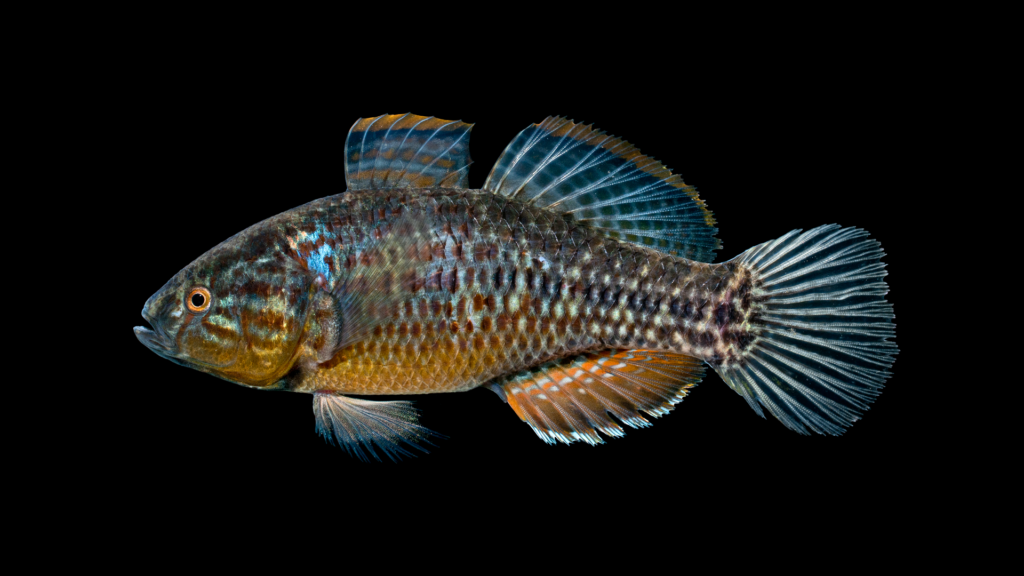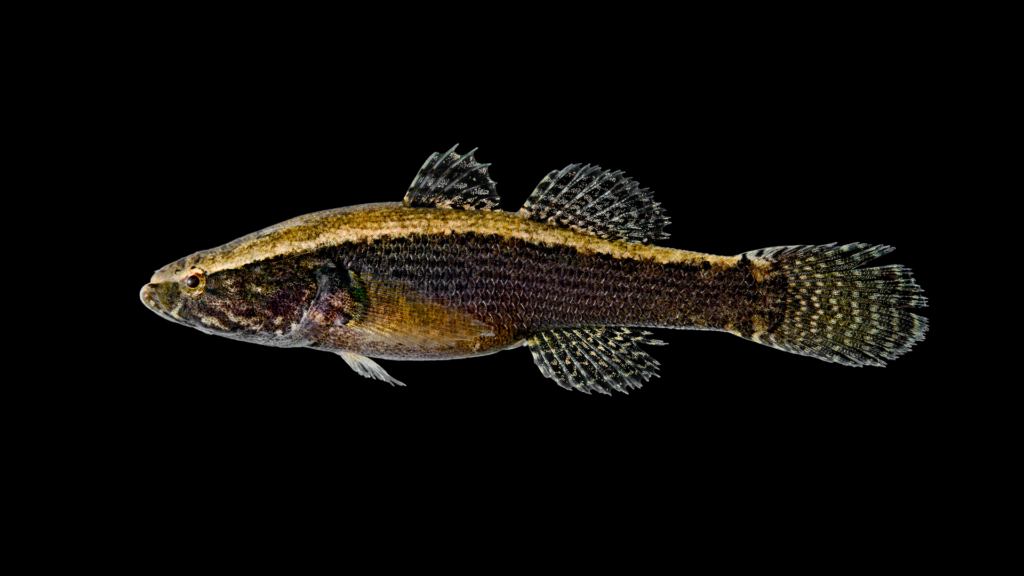By the NCFishes.com Team
The Family Eleotridae is a small family of just three species inhabiting North Carolina’s shallow coastal waters. These species, unknown to most, are: Fat Sleeper, Dormitator maculatus, Largescaled Spinycheek Sleeper, Eleotris amblyopsis, and Emerald Sleeper, Erotelis smaragdus (NCFishes.com; Tracy et al. 2020). [Please note: Tracy et al. (2020) may be downloaded for free at: https://trace.tennessee.edu/sfcproceedings/vol1/iss60/1.] The Fat Sleeper and Largescaled Spinycheek Sleeper don’t venture very far inland, but both species can be found in some of the smaller tributaries to the lower Cape Fear and Neuse rivers. [Note: see Supplemental Maps 1-3, page 7, showing North Carolina’s 100 counties, 21 river basins, and 4 physiographic regions.]

Because of their lack of commercial or recreational importance, none of the species is a federally- or state-listed species (NCAC 2017; NCNHP 2020; NCWRC 2017). And due to their obscurity, they really don’t have any common or vernacular names other than the American Fisheries Society-accepted common names listed previously (Page et al. 2013). But like all organisms, each of the scientific (Latin) names actually means something (please refer to The Meanings of the Scientific Names of Sleepers, page 6).
In North Carolina, Fat Sleeper appears restricted to shallow fresh and estuarine waters including coastal streams, ponds, and ditches in the Cape Fear, White Oak, Neuse, and Tar basins as far north as Ocracoke Island on the Cape Hatteras National Seashore, Dare County (Map 1; Ross and Rohde 2004; Tracy et al. 2020). In South Carolina, the Fat Sleeper is often found in coastal fresh waters, but is more common in brackish waters, especially in areas of low salinity (Rohde et al. 2009). It may reach a length of 380 mm (15 inches), but is seldom longer than 250 mm (10 inches) (Rohde et al. 2009).
Largescaled Spinycheek Sleeper is found in the Cape Fear, White Oak, and Albemarle basins as far north as off of Roanoke Island in the Croatan Sound, Dare County (Map 2). In South Carolina, the Largescaled Spinycheek Sleeper tolerates a wide range of salinity and has been found in fresh and brackish water and in low-salinity upper estuaries, often over a mud substrate (Rohde et al. 2009; Ross and Rohde 2004). It reaches a length of 250 mm (10 inches) (Rohde et al. 2009).

The Emerald Sleeper is extremely rare in North Carolina – it is only known from two specimens (Ross and Rhode 2004). The first specimen was collected at night on March 04, 1987 from the intake canal of the Brunswick Nuclear Plant in Brunswick County, which opens onto the lower Cape Fear River estuary near Southport. This 67 mm Standard Length specimen was vouchered in the formerly Carolina Power and Light Company fish collection, but it cannot be located (Kyle Hussey, Duke Energy, pers. comm.). The second specimen was collected by trawl on May 18, 1993 at the northwest end of Masonboro Island in New Hanover County. This 92 mm Standard Length specimen was gifted to the Florida Museum of Natural History (UF Catalogue No. 96684). No other specimens have been collected from North Carolina waters since then. The closest known localities are from Volusia County, Florida (Fishnet 2, http://www.fishnet2.net/, accessed February 19, 2021).
The identification of Sleepers is fairly straight-forward. Key characteristics for their proper identification include the number of dorsal fin spines, dorsal fin rays, and pectoral fin rays; the lateral series scale count; the presence or absence of a preopercular spine; the presence of cycloid or ctenoid scales; and the length of the anterior extension of the caudal fin (please refer to the Identification Key to the Sleepers (Family Eleotridae) in North Carolina).
If you have troubles with your identifications, just send us (https://ncfishes.com/contact/) an e-mail and include as many quality digital photographs as you can along with all the pertinent locality descriptors so that we will know from where the fish came.